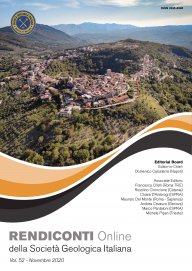
Influence of hard defence structures on shoreline erosion along Molise coast (southern Italy): a preliminary investigation
Gianluigi Di Paola (1), Margherita C. Ciccaglione (2), Mariano Buccino (2) & Carmen M. Rosskopf (1)
(1) Dipartimento di Bioscienze e Territorio, Università degli Studi del Molise, Pesche (IS)
(2) Dipartimento di Ingegneria civile, edile e ambientale, Università degli Studi del Napoli "Federico II", Napoli.
Corresponding author e-mail: gianluigi.dipaola@unimol.it
Volume: 52/2020
Pages: 2-11
Abstract
The 36 km long coastline of Molise region is part of the Central Adriatic coast and consists of two nearly independent physiographic sub-units separated by the rocky promontory of Termoli. The Molise shoreline has undergone significant erosion during the last 60 years that prevailingly affected the coastal segments including the major river mouths (Trigno and Biferno). Erosion has been faced mainly through engineering interventions and, nowadays, nearly 62% of the shoreline is covered by hard defence structures. In this study, the numerical model GENESIS is used to assess the potential shoreline trends, in order to evaluate the potential interference of hard defence structures. The wave climate has been reconstructed and the concept of Littoral Drift Rose (LDR) has been employed to achieve the wave parameters responsible for littoral transport. Results indicate that defence structures most likely have played a key role in shoreline recession whereby their removal could positively influence the Molise littoral regime.
Keywords
Get Full Text